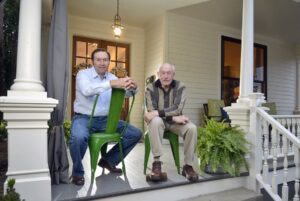
Jason and Roy Dorn on the porch of the historic home they transformed
[gdlr_image_link type=”image” image_url=”” link_url=”” alt=”” target=”_blank”]Chattanooga. When you shake Roy Dorn’s hand, you immediately discover that he is a maker, a carpenter. When you talk to his clients you quickly realize he is a master. Recently his craftsmanship helped salvage an 1885 wood-frame Victorian home in downtown Chattanooga. The restoration was extensive and Roy Dorn’s carpentry work now gleams as polished heart pine.
The house is one of several historic restoration projects Nashville Interiors’ publisher Kathryn Nash has completed in the city. Kathryn and her husband, Benjamin Phillips, call this particular project home. It’s the gathering place for friends and family and the magazine’s home office.
“I’ve worked with Roy and Jason Dorn on quite a few intense projects,” said Kathryn. “They are excellent problem solvers when it comes to any type of older structure that offers surprises, good and bad. Their attention to detail and love of the work is unmatched.”
For decades this downtown two-story house served as a busy law firm. The pleasing open floor plan flooded with natural light was once a series of choppy, small rooms. The Dorns created a modern home that respects its architectural integrity and salvaged many of its original charms. One of those charms is the front parlor fireplace mantel, original to the home. Another is the unique millwork of the stairwell banister. “I’ve never seen one like it,” said Roy.
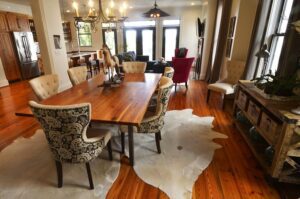
The new open floor plan
While the house is magazine ready, there were days when Jason Dorn emerged from the job site looking like a coal miner’s son, not a carpenter’s son. A minor furnace fire decades ago had filled the ‘balloon’ wall structures with soot and ash. A ‘balloon wall’ is the result of 22’ tall timber frames that span the first and second floors, creating a void between the timbers where soot and dust collected. Firewalls now cap each floor so that a fire will not spread so quickly, but in 1885, ‘firewall’ was not a word in any carpenter’s vocabulary. In 1885, the words ‘plywood’ and ‘subfloors’ did not exist. Clapboard was nailed directly to the studs and tongue-and-groove flooring sat directly on the floor joists. In 1885, foundation walls were typically only one brick thick between the piers, causing settling to be dramatic.
The house needed structural improvements and new footings were poured in the basement to better support the floors and load bearing walls. Part of the front porch was rebuilt, and the interior plaster and lathe was gutted. The project took nine months, and proved to be exactly the kind of work where the Dorns’ skill set shines.
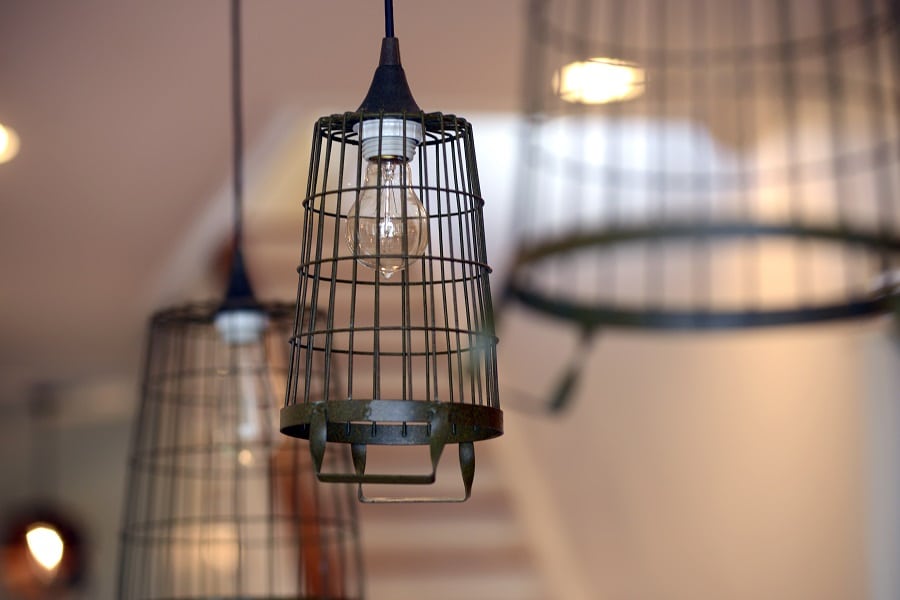
Wire baskets repurposed as kitchen island pendant lighting were found at Merchants on Main in Chattanooga
The Dorns like a challenge, or at least expect one, with each historic property. The father-son team are often called in when another contractor has gotten in over his or her head and over budget. They’ve rebuilt log homes on Signal Mountain and salvaged more than one large estate on Lookout Mountain. “If there’s a structural problem, there will inevitably be a cosmetic problem too,” said Roy. “If you don’t realign the basic support structure, the results will not be lasting or satisfying for the homeowner. There are no shortcuts to quality. If the basic structure of a home has suffered years of neglect.”
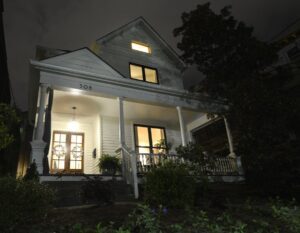
1885 Victorian
As a young man Roy moved away from the South to New England where he got his first extensive remodeling experience working on ‘post and beam’ homes dating back to the 1700s. “There was nothing straight or plumb about those homes,” he said. “They were held together with ‘mortis and tenon’ joints and if you didn’t know better the entire thing could collapse.” Working on these Revolutionary War-era homes proved to be, well, revolutionary for the young man who already displayed a keen interest in carpentry, tools, and techniques.
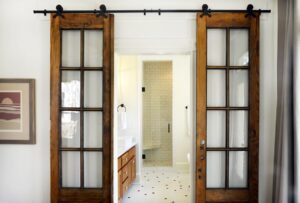
Original front doors were repurposed with rustic hardware sliders for the master bath.
In 1974 Roy Dorn began what we would call today a ‘start-up.’ He purchased a ’65 Chevy panel truck and went into business with his brother-in-law. A hand-painted sign on the car said, ‘Walker & Dorn Building Contractors.’ “We were young and had confidence,” said Dorn. “Now we have experience.”
Jason Dorn is now his father’s business partner, and while he began as an apprentice, he too has become a master carpenter. “There is great satisfaction in investing three months of interior demolition and then bringing a beautiful house back to life,” said Jason. “The results exceeded everyone’s expectation.”
Roy Dorn lives outside of Chattanooga in Sale Creek, on the farm where he was raised. He recalls his very first construction project, helping his father and uncle take down and rebuild a barn on their property. Still a child, he was handed a claw-head hammer and a rough-hewn board to ‘clean,’ meaning to tediously pull out the old nails and straighten them with a pounding. That young boy learned to recycle each iron nail as if the metal had the value of a coin, because it did. In other words, repurposing lumber is not a new trend for Roy Dorn. When you visit his place you pass a barn with a loft stacked with slats of boards of all widths and lengths. Roy Dorn reminds us, “Recycling and reusing lumber is the practice of anyone raised on a farm.”

Furnishings include a vintage typewriter table from the 1940s from The Refindery in Chattanooga. The slate blue sofa is from Mango’s Decor and Co.
Southern Sources
Jason and Roy Dorn, Roy Dorn Construction, Sale Creek, TN.: radornbldg@gmail.com, 423.332.5270
Interior Trim & Supply: 423.855.4108
Tallent Planing Mill & Lumber Co., Jamestown, TN: 931.879.4877
Ferguson (plumbing fixtures and lighting), Nashville and Chattanooga
Merchants on Main, Chattanooga: , 423.521.6285
The Refindery on McCallie, Chattanooga: 423.697.1243
Mango’s Décor and Co., Chattanooga and Knoxville
Rocky Top Custom Countertops: 423.805.9906
Bellavin Woodworks, Sale Creek, TN.: 423.332.6260
Photography by Billy Weeks
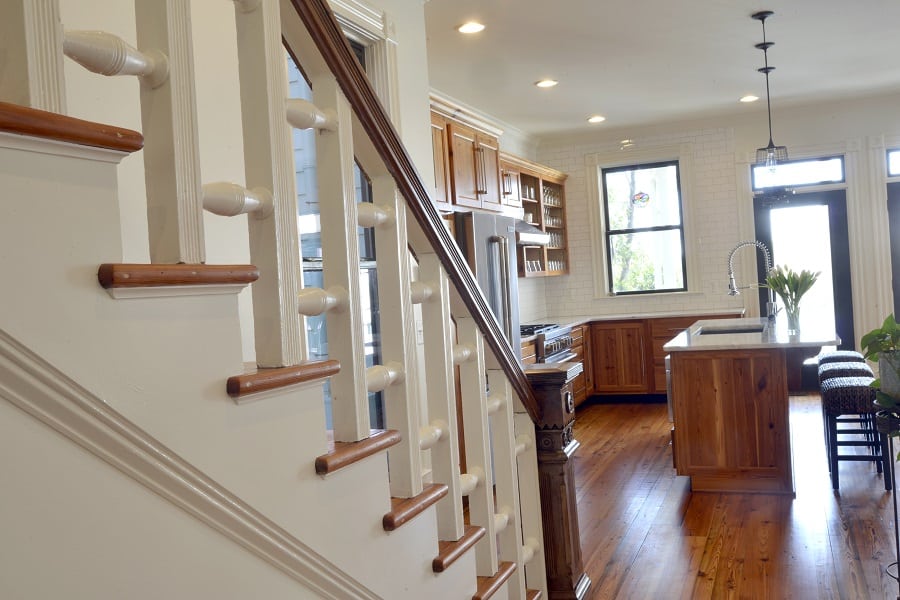
The original stair banister adds to the charm of this home

The back yard offers a low maintenance hardscape with recycled brick in a herringbone pattern, fountains, and a hot tub spa attached to the swimming pool
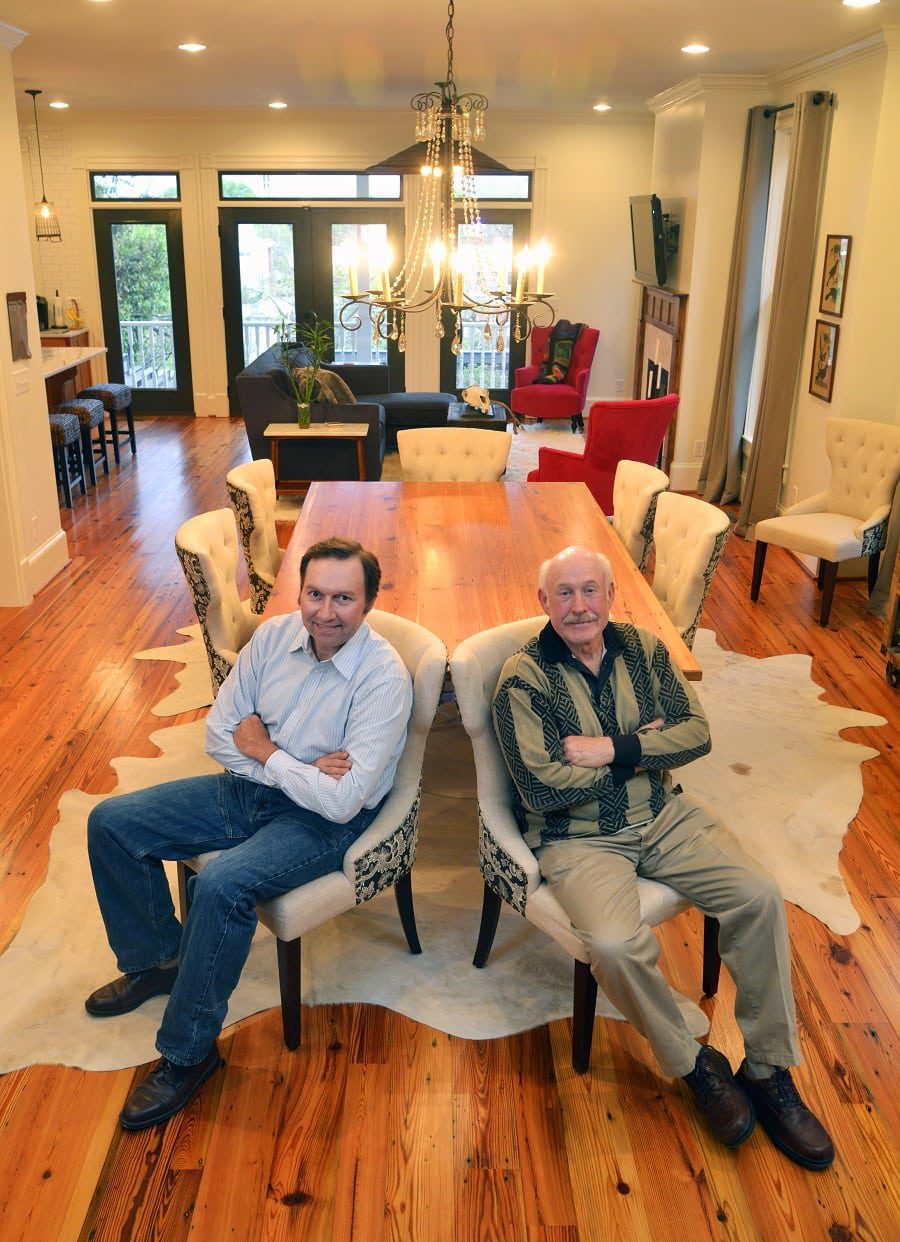
Master carpenter Jason Dorn with his father, Roy Dorn, at the dining table they planed from salvaged pine boards
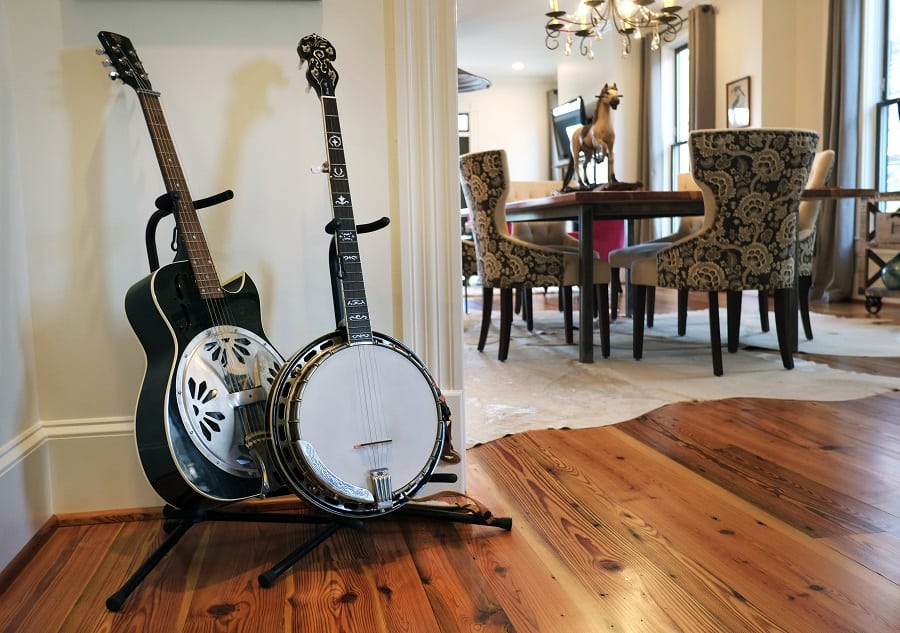
Heart pine floors create warmth throughout the new open floor plan
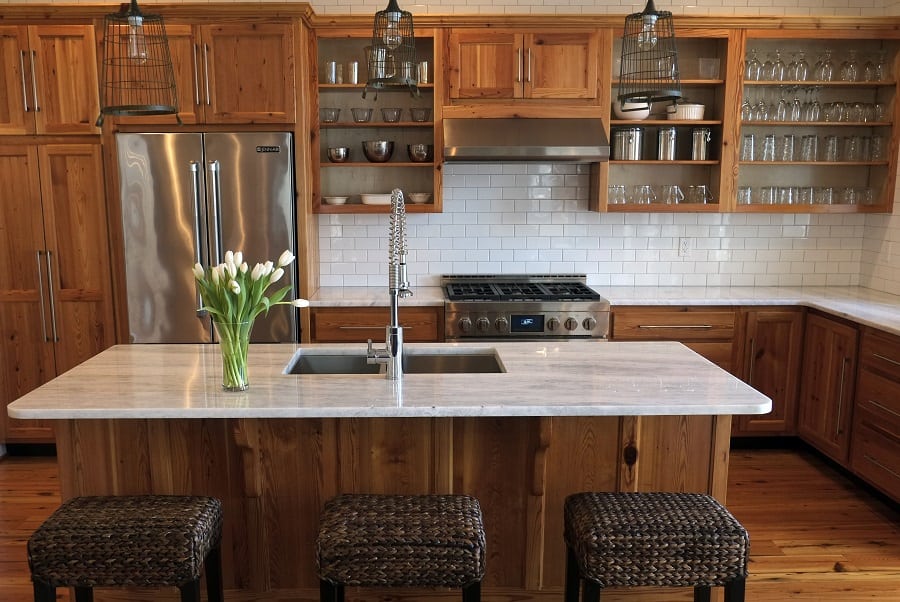
The kitchen cabinetry was created from 130-year old heart pine, salvaged from the interior of the home. Countertops are marble from supplier Rocky Top Custom Countertops. The island lighting was selected by the homeowner from Merchants on Main.
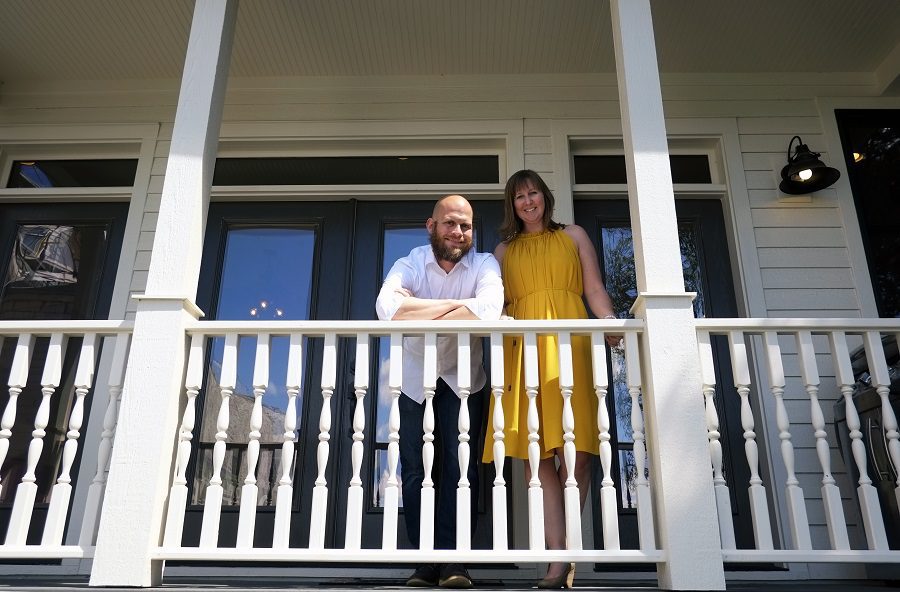
Homeowners Benjamin Philipps and Kathryn Nash on the back balcony, which offers scenic views of downtown Chattanooga and Lookout Mountain. Kathryn is the Publisher of Nashville Interiors.


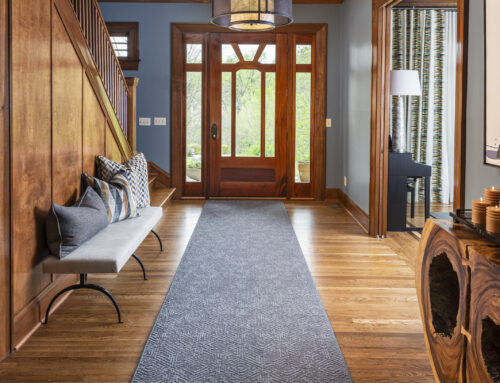



Leave A Comment
You must be logged in to post a comment.